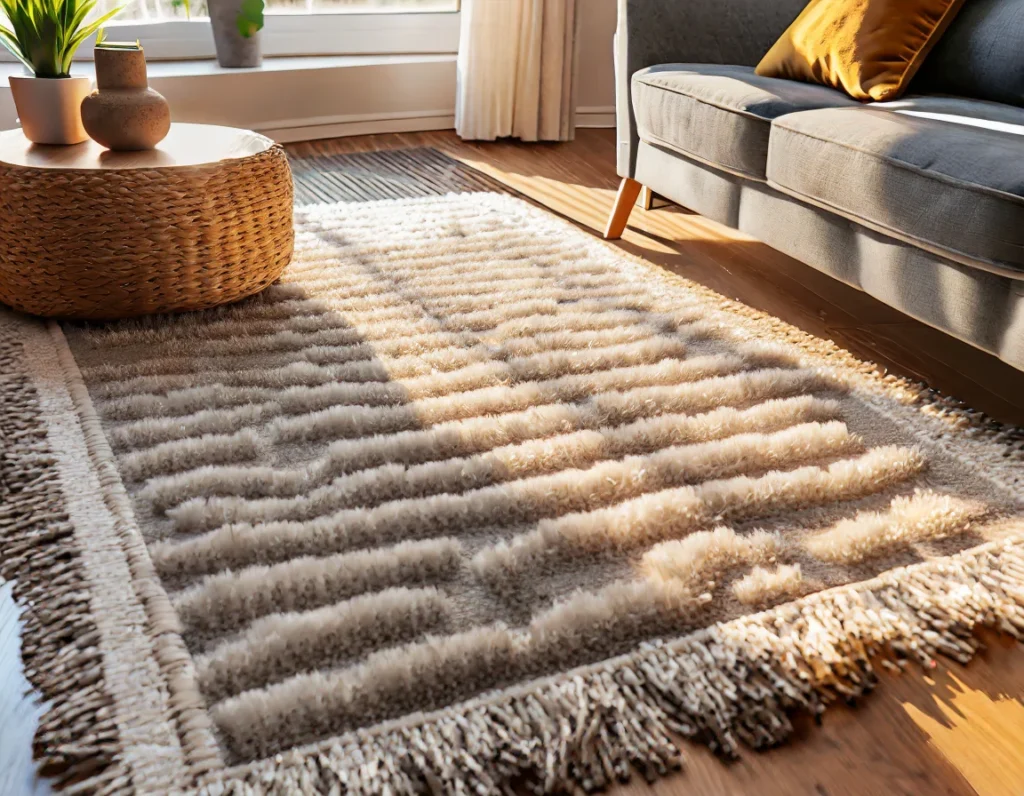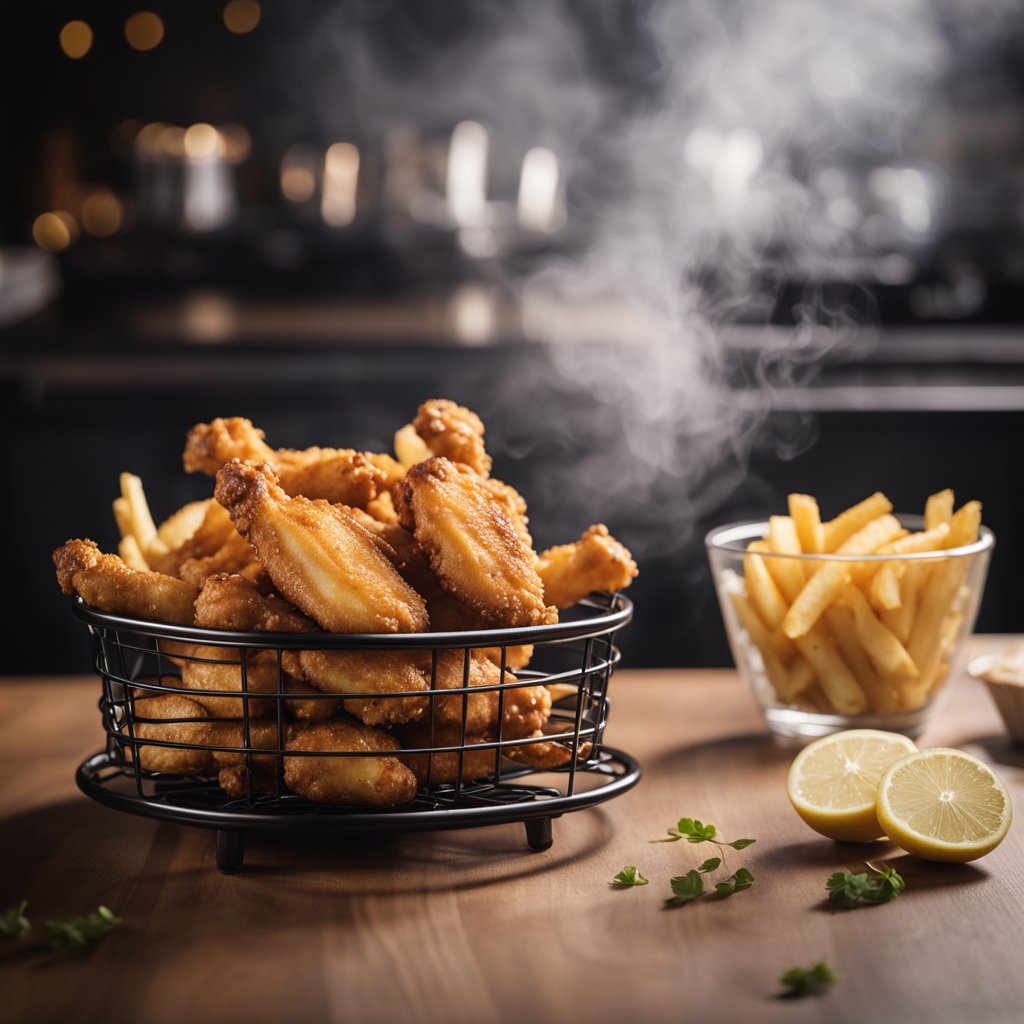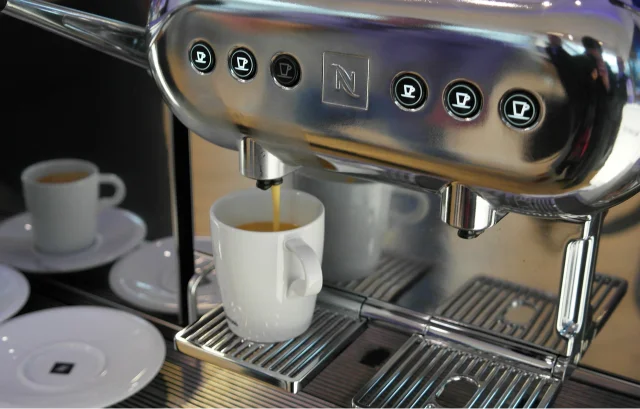Clogged kitchen drains can be a source of frustration, but with the right approach, they can often be cleared without professional help. This step-by-step guide on how to clean kitchen drain will walk you through the process of identifying the cause of the clog, employing natural and mechanical cleaning methods, and maintaining your drain to prevent future blockages. Whether you’re dealing with food waste, grease, or foreign objects, these tips will help you restore the flow to your kitchen sink.
Contents
- 1 Key Takeaways
- 2 Identifying and Addressing the Clog
- 3 Natural Cleaning Solutions
- 4 Mechanical Unclogging Techniques
- 5 Preventive Maintenance and DIY Fixes
- 6 Knowing When to Call a Professional
- 7 Conclusion
- 8 Frequently Asked Questions
- 8.1 What natural solutions can I use for minor kitchen drain clogs?
- 8.2 How do I properly use a plunger to unclog my kitchen drain?
- 8.3 What should I do if my kitchen drain is still clogged after plunging?
- 8.4 Can I use chemical cleaners to unclog my garbage disposal?
- 8.5 Are there any DIY fixes for gurgling kitchen drains?
- 8.6 When should I call a professional to handle a clogged kitchen drain?
Key Takeaways
- Assess the severity of the clog and try natural cleaning solutions like a mix of baking soda and vinegar or hot water flushes before resorting to mechanical methods.
- Use a plunger correctly by sealing off the dishwasher line, covering the drain completely, and ensuring water covers the lip of the plunger for effective unclogging.
- For persistent clogs, manually remove and clean the drain trap and trap arm, or use a wire hanger to dislodge blockages if full disassembly isn’t possible.
- Regular DIY maintenance such as plunging, snaking, and flushing with hot water can prevent clogs and avoid the need for professional intervention.
- Avoid using chemical cleaners as they can damage your disposal system; instead, opt for natural solutions and seek professional help for tough, persistent clogs.
Identifying and Addressing the Clog

Assessing the Severity of the Blockage
Before taking any action, it’s crucial to assess the severity of the blockage. Simple signs such as slow draining water or minor gurgling noises might indicate a minor clog that can be handled with DIY methods. However, if you’re experiencing persistent issues or multiple fixtures are affected, the problem may be more serious.
Severity indicators:
- Slow drainage
- Gurgling sounds
- Bad odors
- Water backup
A single fixture with slow drainage is often a local clog, while multiple fixtures experiencing issues could point to a systemic problem.
For complex clogs, professional diagnosis is recommended. Persistent or severe symptoms such as water backing up in different fixtures or the presence of sewer gas odors suggest the need for expert intervention. Remember, overlooking serious clogs can lead to more significant plumbing issues.
Natural Solutions for Minor Clogs
When faced with minor clogs, natural solutions can be both effective and environmentally friendly. Before reaching for harsh chemicals, consider simpler, gentler methods. A common DIY fix involves a mixture of baking soda and vinegar, which can help dissolve organic matter causing the blockage.
- Step 1: Pour a 1/2 cup of vinegar and a 1/4 cup of baking soda into the drain.
- Step 2: Wait for 10 to 20 minutes to let the solution work.
- Step 3: Flush the drain with hot water to clear out the loosened debris.
For persistent clogs, repeating the process may be necessary. However, if natural solutions fail to clear the blockage, it might be time to explore mechanical methods.
Remember, regular maintenance can prevent the buildup that leads to clogs. Incorporating natural cleaners into your routine can keep your drains flowing smoothly without the need for harsh chemicals.
When to Opt for Mechanical Methods
Sometimes, natural solutions just don’t cut it. When a clog proves stubborn, it’s time to bring out the mechanical cavalry. Mechanical methods, such as plunging or snaking, offer a direct approach to dislodging blockages.
Plungers are the first line of defense. A proper seal and vigorous pumping action can often clear the obstruction. If this fails, a drain snake or auger can navigate the pipes to break apart or retrieve the clog.
Remember, mechanical methods should be used with caution to avoid damaging your pipes.
For persistent issues, consider the following steps:
- Use a plunger with a flange designed for sinks.
- If plunging doesn’t work, use a manual drain snake.
- For disposal clogs, turn off power and manually clear blades.
- When all else fails, it may be time to call a professional.
Always avoid using harsh chemicals as they can harm your plumbing system. Instead, opt for mechanical methods or seek professional help if the problem persists.
Natural Cleaning Solutions

The Baking Soda and Vinegar Method
This two-ingredient combo is a powerhouse for unclogging drains. Pour baking soda down the drain, followed by vinegar, and cover it tightly. The fizzing action works for at least 15 minutes, breaking down organic buildup. Afterward, flush the drain with hot water to clear the debris.
For a simple and eco-friendly cleaning, this method is not only safe for the environment but also gentle on your pipes, reducing the risk of damage over time.
Remember, patience is key. Give the natural reaction ample time to work before rinsing.
While effective for minor clogs, this method may not suffice for more stubborn blockages. In such cases, consider mechanical techniques or consult a professional.
Hot Water Flushes
A simple yet effective method for maintaining a clear kitchen drain is the hot water flush. This technique involves pouring a pot of boiling water directly down the drain. The heat helps to dissolve and dislodge fatty residues and other minor blockages that might be starting to build up.
To perform a hot water flush, follow these steps:
- Boil a large pot of water.
- Carefully pour the boiling water directly into the drain.
- Wait a few minutes and then check if the water flows more freely.
Consistency is key with this method. Regular hot water flushes can prevent the accumulation of substances that commonly cause clogs.
Remember, this method is not suitable for all types of kitchen sinks. For sinks with natural stone or other delicate materials, consult the manufacturer’s guidelines to avoid damage.
While hot water flushes are great for maintenance, they may not be effective for more severe clogs. In such cases, exploring mechanical methods or professional assistance might be necessary.
Alternative Natural Cleaners
Beyond the classic baking soda and vinegar mix, there are other natural cleaners that can be just as effective without the harshness of chemicals. Lemon juice, for instance, can break down fatty substances and leave a fresh scent. Salt, when combined with hot water, can act as an abrasive to scrub away minor blockages.
- Lemon juice and hot water: A natural degreaser.
- Salt and boiling water: Scrubs and clears minor clogs.
For a homemade touch, try Granny’s Homemade Liquid Plumber Alternative. This concoction is a blend of baking soda, vinegar, and boiling water, designed to tackle your drains without the need for chemicals.
Remember, regular use of these natural solutions can prevent clogs from forming in the first place.
While these methods are gentler on your pipes, they may not always be sufficient for more stubborn clogs. In such cases, mechanical methods or professional assistance might be necessary.
Mechanical Unclogging Techniques

The Proper Way to Plunge
Plunging is a straightforward yet effective technique for clearing minor to moderate sink clogs. Ensure the plunger fully covers the drain and that there’s enough water in the sink to cover the plunger’s lip. This creates a seal necessary for optimal pressure.
Before plunging, clamp off any dishwasher connection to prevent backflow. Then, with a firm grip, plunge up and down vigorously. The goal is to push water through the clog, not air. After about 20 seconds, if the water begins to drain, you’ve likely dislodged the clog.
To finish, flush the drain with hot water to clear any remaining debris. Remember, consistent plunging force is key to success. If the clog persists, consider other mechanical methods or consult a professional.
Manually Clearing the Disposal Blades
When your disposal is jammed, manually rotating the blades can often resolve the issue. Ensure the power is completely off before attempting this method. Use a tool, such as a wooden spoon or an Allen wrench, to carefully turn the blades and dislodge any debris.
Safety first: Never insert your hand into the disposal without confirming the power is off.
By manually turning the blades, you can break down or reposition the clog for easier removal.
Remember to clean the P-trap as well, as blockages often occur there. Regular maintenance, including grinding ice cubes with citrus peels, keeps the blades sharp and the disposal fresh. Avoid overloading the disposal and steer clear of eggshells, which can contribute to clogs.
Snaking the Drain
After trying simpler methods, it’s time to tackle persistent clogs with a plumbing snake. Insert the snake into the drain and rotate it to break up the obstruction. This tool reaches deeper than other DIY methods, making it effective for stubborn blockages.
- Prepare: Wear gloves and have a bucket handy for debris.
- Insert: Gently feed the snake into the drain until resistance is met.
- Rotate: Turn the handle to navigate through the clog.
- Remove: Extract the snake slowly, cleaning off any accumulated waste.
Regular inspection and preventive snaking can maintain clear drains and prevent severe clogs.
For clogs beyond reach, professional services with advanced equipment may be necessary. They can handle severe obstructions that DIY efforts can’t resolve, ensuring your home’s drainage pipes function optimally.
Preventive Maintenance and DIY Fixes

Regular Cleaning Routines
Maintaining a clog-free kitchen drain is not just about addressing blockages as they occur; it’s about preventing them from happening in the first place. Regular cleaning routines are essential for keeping your drains clear and functional. Here are some simple steps to incorporate into your cleaning habits:
- Scrape plates and pans into the garbage or compost before washing to prevent food scraps from entering the drain.
- Use drain catchers in bathroom sinks and showers to capture hair and avoid clumping.
- Periodically inspect drains for visible buildup and use a plumber’s hand auger for a quick clean.
By combining sustainable cleaning habits with DIY preventative maintenance, you can prevent minor issues from escalating into major plumbing problems.
Remember to also clean appliances like your washing machine with a vinegar and baking soda mixture to tackle soap scum and other materials that could lead to clogs. And don’t forget to check plumbing vent stacks annually for debris that could affect airflow and venting.
Avoiding Common Clogging Culprits
To maintain a clear kitchen drain, it’s essential to be mindful of what goes down it. Avoid pouring fats, oils, and grease (FOG) into the sink, as they solidify and create stubborn blockages. Instead, dispose of them in the trash.
Food scraps should be scraped into the garbage or compost bin before washing dishes. Even small particles can lead to significant buildup. Use a sink strainer to catch any remnants, a small investment that can prevent major plumbing issues.
- Food peels
- Foreign objects
- Insufficient flushing water
- Grinding no-nos like coffee grounds and eggshells
Be proactive in your approach to drain care. Regularly using a sink strainer and properly disposing of waste can save you from the inconvenience of a clogged sink.
DIY Gurgling Fixes
When your kitchen sink starts to gurgle, it’s a sign that air is trapped somewhere in the plumbing system. A quick response can prevent more serious issues from developing. Here are some DIY fixes to try:
- Check for blockages: Remove any visible debris from the drain.
- Use a plunger: Apply firm, consistent pressure to help dislodge minor clogs.
- Inspect the vent pipe: Ensure it’s free from obstructions like leaves or nests.
Persistent gurgling may indicate a deeper issue. If simple methods don’t work, consider a more thorough approach:
- Clean the P-trap: Place a bucket underneath, unscrew the trap, and clear out any accumulation.
- Snake the drain: A drain snake can reach clogs that are further down the pipe.
Preventive measures are key to avoiding gurgling in the future. Regular maintenance, such as a hot water flush, can keep your drains clear. Additionally, be mindful of what goes down the sink to prevent blockages.
Consistent maintenance and mindful usage of your kitchen sink will keep the plumbing system healthy and gurgle-free.
Remember, if DIY fixes don’t resolve the gurgling, it may be time to seek professional help to avoid costly repairs.
Knowing When to Call a Professional

Signs That You Need Expert Intervention
Despite your best efforts, some clogs demand professional attention. Persistent gurgling across multiple fixtures, foul odors, and water damage are clear indicators. If you’ve tried all the DIY methods and the problem remains, it’s time to seek help.
- Gurgling in multiple fixtures
- Slow drainage despite efforts
- Foul odors from drains
- Water damage signs
- Constant gurgling noise
- DIY solutions ineffective
Complex plumbing issues can escalate quickly, leading to costly damage. It’s essential to act promptly when you notice these signs.
Professional plumbers have the tools and expertise to diagnose and solve problems that go beyond the reach of home remedies. Look for licensed, experienced, and well-reviewed services to ensure a lasting solution. Ignoring these signs can lead to severe consequences, such as sewage backups and structural damage. Acting early can save you from more significant issues and expenses.
The Risks of Overlooking Serious Clogs
Ignoring serious clogs in your kitchen drain can lead to a cascade of problems. Water damage from overflowing drains can be both disastrous and expensive, urging the need for proactive measures against persistent gurgling noises.
Health hazards such as exposure to sewer gases, the growth of toxic black mold, and the spread of harmful bacteria are serious concerns. These risks underscore the importance of not dismissing plumbing red flags.
The compounding effects of unresolved plumbing issues can lead to sewage backups, hazardous gas buildups, and even structural damage over time.
Clogged pipes can also strain your plumbing system to the point of bursting, which is why addressing gurgling sounds is crucial. The cost of repairs and the potential for extensive damage increase the longer these issues are ignored.
Professional Solutions for Persistent Problems
When persistent problems plague your kitchen drain, it’s time to consider the expertise of a professional plumber. Hydro jetting is a powerful solution that can tackle the most stubborn of clogs, including grease buildup, tree roots, and deep-seated blockages. This method is often more effective than traditional snaking because it cleans the entire diameter of the pipe, not just a path through the clog.
Professionals bring a suite of advanced tools and techniques to the table. Trenchless repair methods, for instance, can address serious issues like collapsed pipes and failed joints with minimal disruption to your property. Here’s a quick list of what professionals might offer:
- Comprehensive drain cleaning
- Trenchless pipe repair
- Hydro jetting services
- Regular maintenance plans
Remember, a professional assessment is not just a last resort; it’s a wise choice for ensuring long-term plumbing health.
By entrusting your plumbing to the experts, you avoid the risks of temporary fixes and ensure a thorough resolution to gurgling drains and other plumbing woes. The cost of professional intervention often pales in comparison to the expenses associated with major repairs or damage caused by neglected issues.
Conclusion
In conclusion, maintaining a clear and functional kitchen drain is essential for a hassle-free home environment. By following the step-by-step guide provided, you can effectively tackle common clogs using natural cleaners, manual methods, and preventative measures. Remember that regular maintenance and mindful usage are key to avoiding severe blockages. However, if you encounter a stubborn clog that resists all efforts, don’t hesitate to seek professional help. With the right approach, you can ensure that your kitchen drain remains unclogged, allowing you to focus on the joys of cooking and cleaning without the worry of drainage issues.
Frequently Asked Questions
What natural solutions can I use for minor kitchen drain clogs?
For minor clogs, a mixture of 1/2 cup of vinegar and 1/4 cup of baking soda can be effective. Pour this solution down the drain, wait 10 to 20 minutes, and then flush with hot water.
How do I properly use a plunger to unclog my kitchen drain?
To use a plunger, first ensure the dishwasher hose is clamped off. Cover the drain with the plunger, fill the sink with enough water to cover the lip of the plunger, and then plunge vigorously until the water flows freely. Follow with a hot water flush.
What should I do if my kitchen drain is still clogged after plunging?
If plunging doesn’t work, manually check and clean the drain trap and trap arm for debris. You can also use a wire hanger or plumbing snake to dislodge blockages deeper in the drain.
Can I use chemical cleaners to unclog my garbage disposal?
It’s not recommended to use chemical cleaners as they can damage the plastic components of your disposal system. Natural cleaners like baking soda and vinegar are safer alternatives.
Are there any DIY fixes for gurgling kitchen drains?
Yes, you can try plunging or snaking the drain to clear basic vent blockages or light clogs. These methods can often restore proper flow and eliminate gurgling sounds.
When should I call a professional to handle a clogged kitchen drain?
If you’ve tried natural cleaners, plunging, and snaking without success, or if you notice signs of a serious clog like water backing up or bad odors, it’s time to seek professional help.



